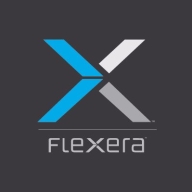


Flexera Cloud Management Platform and VMware Tanzu Platform compete in cloud operations optimization. VMware Tanzu has an advantage with its robust feature set, although Flexera CMP is noted for its favorable pricing and support.
Features: Flexera CMP provides robust multi-cloud management with strong policy controls and extensive automation features, making it effective for optimizing resources. VMware Tanzu integrates deeply with Kubernetes, supporting advanced cloud-native application development and efficient scaling. Tanzu's strong CI/CD pipeline capabilities notably enhance its offerings.
Room for Improvement: Flexera CMP could improve by expanding its integration with other cloud services and simplifying complex automation processes. Additional analytics tools could enhance its platform. VMware Tanzu may benefit from streamlining its deployment processes and reducing the expertise required for implementation. Its pricing model could be adjusted for better competitiveness.
Ease of Deployment and Customer Service: Flexera CMP offers a simple and straightforward setup, suitable for both small and large environments, supported by dedicated customer service. VMware Tanzu's deployment leverages microservices and may require specialized expertise, yet provides strong support for cloud-native applications.
Pricing and ROI: Flexera CMP presents a competitive pricing model with transparent costs, offering a positive ROI through efficient resource management and cost savings. On the other hand, VMware Tanzu requires a higher initial investment, justified by its enhanced feature set and significant long-term ROI potential.


IBM Turbonomic offers automation, planning, and right-sizing recommendations to streamline resource management, improve efficiencies, and optimize costs across virtualized environments and cloud platforms.
IBM Turbonomic is valued for its capability to optimize resource allocation and monitor virtual environments efficiently. It facilitates automated decision-making in VM sizing, load balancing, and cost optimization for both on-premises and cloud deployments. Users can leverage insights for workload placement, ensure peak performance assurance, and effectively right-size across VMware and Azure. The ongoing transition to HTML5 aims to improve visual and navigational ease, while expanded reporting features are anticipated. Opportunities for improved training, documentation, and integrations enhance platform usability and functionality.
What Are the Key Features?In finance, IBM Turbonomic aids in maintaining platform efficiency during market fluctuations. Healthcare organizations leverage its capability for resource optimization during high-demand periods to enhance patient care support. Retailers use it for planning in peak seasons, ensuring resources align with fluctuating demand to maintain performance continuity.
Flexera Cloud Management Platform (CMP) optimizes cloud costs and resources while efficiently managing multi-cloud environments. Its features for monitoring and governance aid in compliance. Valued for integration capabilities and automation tools, Flexera CMP streamlines cloud operations.
Flexera Cloud Management Platform (CMP) excels in multi-cloud management, cost optimization, and automation. Users appreciate its detailed analytics and reporting features that effectively track usage and costs. The platform's flexibility in integrating with different cloud environments allows seamless operations across various services, while its governance and policy enforcement are significant strengths. However, some users note the need for better integration with additional cloud providers, a high installation complexity, and that the support documentation lacks depth. Reporting features could be more comprehensive, and scalability issues exist in larger environments. Frequent updates can sometimes disrupt ongoing activities.
What are the Key Features of Flexera CMP?Flexera Cloud Management Platform is utilized across numerous industries, including finance, healthcare, and technology, to manage multi-cloud setups. Financial institutions leverage its cost optimization features to streamline expenses. Healthcare providers use its governance tools to ensure strict compliance with regulations. Technology companies benefit from its automation capabilities, allowing them to focus on innovation while Flexera CMP handles cloud infrastructure tasks.
VMware Tanzu Platform is designed for cloud-native development and management of Kubernetes, CI/CD processes, microservices, and containerized workloads. It supports deployments both on cloud and on-premises, providing centralized management via Mission Control.
VMware Tanzu Platform offers seamless integration with vSphere, ESX, and vSAN, supporting centralized cluster management and lifecycle management. The platform provides a GUI for monitoring CI/CD pipelines and network policies, enhancing multi-tenancy and Day 2 operations. Users can easily manage Kubernetes clusters, monitor applications, and integrate with tools such as GitHub, GitLab, Cloud Foundry, and Azure. It ensures compliance and security for service providers, financial institutions, and businesses.
What are the key features of VMware Tanzu Platform?Industries such as financial institutions, service providers, and businesses requiring rigorous compliance and security deploy VMware Tanzu Platform. These entities benefit from centralized management, streamlined DevOps processes, and integrated tools, enhancing their capabilities in cloud-native developments and containerized workloads.
We monitor all Cloud Management reviews to prevent fraudulent reviews and keep review quality high. We do not post reviews by company employees or direct competitors. We validate each review for authenticity via cross-reference with LinkedIn, and personal follow-up with the reviewer when necessary.